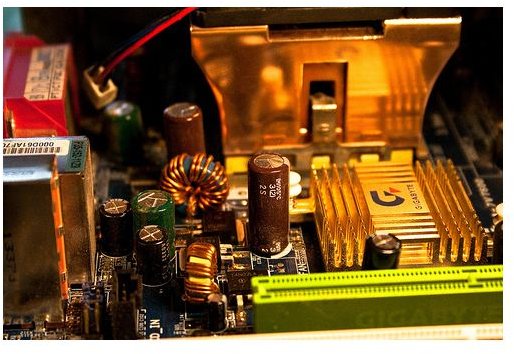Hardware Problem Troubleshooting Diagnostics and Resolution - Motherboard No Video
No Video from Motherboard
There are several reasons why a motherboard would stop outputting video. Assuming that there is one video card installed on a computer, a problem with that video source may cause the computer screen to go blank, but if there is no video the possible causes could range from a broken video port to a critical fault in the motherboard.
Diagnosing a video fault is quite easy because the evidence is clear, that being a blank screen. However, pinpointing the actual problem may require the use of troubleshooting and diagnostic tools. For example, motherboard beep codes and motherboard diagnostic cards can be used to more accurately identify the source of a problem. Regardless, sometimes that problem can be resolved with some tinkering, such as when the motherboard stops outputting video because of a BIOS setting.
The Onboard Video is Disabled
If the motherboard has onboard video capabilities it may be possible to disable it from the BIOS (basic input output system). This is sometimes done to troubleshoot motherboard errors or simply disable the feature if it is not needed.
How to resolve: Enter the BIOS to check if this is the case.
Output to Another Source
Especially in multiple monitor setups, the computer may not send out a signal to a specific port based the operating system is outputting to another source. A good example of this are laptop computers that have been set to display on a multimedia projector for a presentation. This will cause video output to other displays to cease until the changes are reversed.
How to resolve: Use the keyboard function keys to toggle to the desired settings or use the display settings in the Control Panel to set the video output options.
The Video Card is not Properly Seated in the Motherboard
Another reason why the motherboard is not outputting video may be as a result of the video card becoming unseated from the slot or port in which it was installed. This can happen if the card is not properly secured or becomes unseated after the display cable that is attached to it was yanked.
How to resolve: Resolving this problem necessitates accessing the inside of the system unit (the computer case) to reseat the affected component. It is recommended that the power cord be unplugged and an antistatic wristband be used when attempting this fix.
The Motherboard Video Port is Damaged
The computer may not be able to output to an integrated/onboard video port if it is damaged.
How to resolve: The solution to this problem could require:
- Replacing the motherboard
- Installing a dedicated video card.
Summary
The onboard video card or even a dedicated video card can at times have problems. Some issues are easily resolved while other require a bit of troubleshooting. But once you understand the possible source of a video output problem, you will be better able to determine why your motherboard is not outputting video.
Credit
Image: “Motherboard no Video.” whyamiKeenan
